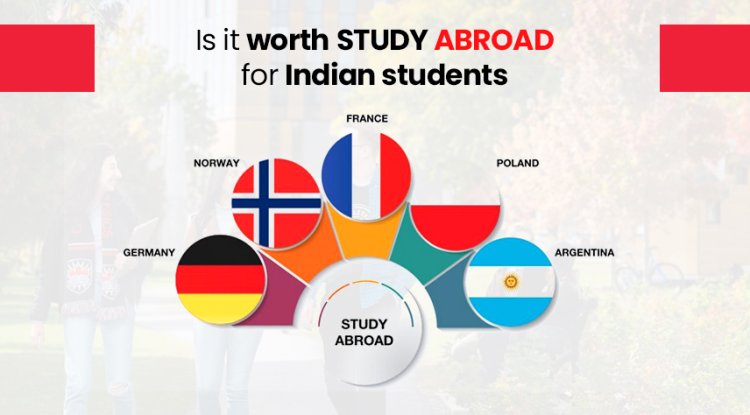What is Student Direct Stream? A Comprehensive Guide
The Student Direct Stream (SDS) is a program that allows eligible international students to obtain their study permits faster. If you meet all the eligibility requirements, you can apply for the SDS program online.

Student Direct Stream (SDS) is a program that is designed to expedite the processing time for study permit applications for eligible international students who want to study in Canada. The program is only available to students from certain countries and requires students to meet certain criteria. The program was launched by the Canadian government in June 2018, with the aim of attracting more international students to Canada.
Under the SDS program, eligible students can expect to have their study permit applications processed within 20 calendar days, which is significantly faster than the regular processing time for study permit applications. The program is only available to students who are applying for a study permit from outside of Canada and who plan to study at a designated learning institution (DLI) in Canada. A DLI is an educational institution that has been approved by a provincial or territorial government to host international students.
To be eligible for the SDS program, students must meet certain criteria.
- First, they must be a legal resident of one of the following countries: China, India,
- Morocco, Pakistan, the Philippines, Senegal, or Vietnam.
- Second, they must be living outside of Canada at the time of application.
- Third, they must provide proof of payment of tuition for their first year of study at a DLI in Canada.
- Finally, they must provide proof of language proficiency in either English or French, which can be demonstrated through a language test, such as the International English Language Testing System (IELTS) or Test d'évaluation de français pour le Canada (TEF Canada).
In addition to meeting the eligibility criteria, students must also provide a complete and accurate study permit application, which includes all required supporting documents. This may include a letter of acceptance from a DLI, proof of financial support, a valid passport, and a biometric fee. The Canadian government may also request additional information or documentation during the processing of the application.
The SDS program is intended to make it easier and faster for eligible international students to come to Canada to study. This can be beneficial for both the students and Canada, as international students can bring diversity, cultural exchange, and economic benefits to the country. In fact, international students contribute billions of dollars to the Canadian economy each year and help to support Canadian jobs and innovation.
However, it is important to note that the SDS program is not a guarantee of a study permit. Students must still meet all of the requirements for a study permit and may be refused if they do not meet the eligibility criteria or if they do not provide a complete and accurate application. Students who are refused a study permit under the SDS program may still be able to apply for a study permit through the regular processing stream.
So, the Student Direct Stream (SDS) is a program that provides expedited processing time for eligible international students who want to study in Canada. The program is only available to students from certain countries who plan to study at a designated learning institution (DLI) in Canada and who meet certain eligibility criteria. While the program can make it easier and faster for eligible students to come to Canada to study, it is important to note that it is not a guarantee of a study permit and students must still meet all of the requirements for a study permit.
What is the eligibility criteria for Student Direct Stream (SDS)?
The Student Direct Stream (SDS) is a program that provides faster processing times for study permit applications for eligible international students who wish to study in Canada. The program is only available to students from certain countries and who meet specific eligibility criteria. In this response, we will discuss in detail the eligibility criteria for the SDS program; which is:
1. Country of Residence
To be eligible for the SDS program, students must be legal residents of one of the following countries: China, India, Morocco, Pakistan, the Philippines, Senegal, or Vietnam. The Canadian government may periodically update the list of eligible countries, so it's essential to confirm the current list before applying.
2. Living Outside of Canada
The SDS program is only available to students who are living outside of Canada at the time of application. Students who are already in Canada on a temporary basis or who have applied for permanent residency are not eligible for the SDS program.
3. Admission to a Designated Learning Institution
Students must also have an offer of admission to a designated learning institution (DLI) in Canada. A DLI is a Canadian educational institution that has been approved by a provincial or territorial government to host international students. Students must provide proof of payment of tuition fees for their first year of study at a DLI in Canada.
4. Language Proficiency
To be eligible for the SDS program, students must demonstrate language proficiency in either English or French. Language proficiency can be demonstrated by taking an approved language test, such as the International English Language Testing System (IELTS) or Test d'évaluation de français pour le Canada (TEF Canada). The minimum score required for each test varies depending on the level of study and program of study.
5. Financial Capacity
Students must demonstrate that they have sufficient financial resources to support themselves and any accompanying family members during their stay in Canada. They must provide proof of financial capacity, which includes evidence of tuition fees paid, accommodation costs, living expenses, and return transportation. The Canadian government may request additional financial documents or evidence during the processing of the application.
6. Immigration Medical Examination
All applicants, including those applying under the SDS program, must undergo an immigration medical examination before coming to Canada. The medical examination must be conducted by a physician approved by the Canadian government.
7. Background Check
All applicants must also pass a security background check before being granted a study permit. The background check will examine the applicant's criminal record, immigration history, and any other relevant information. If there are any concerns with the applicant's background, the study permit application may be refused.
In addition to the above eligibility criteria, students must also meet all other requirements for a study permit, such as having no medical or criminal inadmissibility issues, demonstrating a genuine intention to leave Canada at the end of their studies, and meeting any other requirements as set out by the Canadian government.
It's important to note that meeting the eligibility criteria for the SDS program does not guarantee approval of a study permit application. Each application is assessed on a case-by-case basis, and the Canadian government may request additional documentation or information to assess the student's eligibility for a study permit.
So, the Student Direct Stream (SDS) program provides faster processing times for study permit applications for eligible international students who wish to study in Canada. To be eligible for the SDS program, students must be legal residents of an eligible country, living outside of Canada, have an offer of admission to a designated learning institution in Canada, demonstrate language proficiency, show proof of financial capacity, pass an immigration medical examination, and pass a security background check. Students must also meet all other requirements for a study permit as set out by the Canadian government.
Is Student Direct stream Faster?
Yes, the Student Direct Stream (SDS) program is designed to provide faster processing times for study permit applications for eligible international students who wish to study in Canada. The program was launched in June 2018, as a pilot project for students from India, China, Vietnam, and the Philippines, but has since expanded to include Morocco, Senegal, and Pakistan.
Under the SDS program, eligible applicants can expect faster processing times for their study permit applications, typically within 20 calendar days, compared to the standard processing time of approximately 60 days for non-SDS applications. However, the processing time can vary depending on the volume of applications received, the completeness of the application, and any additional documentation or information required by the Canadian government.
The SDS program provides faster processing times by streamlining the application process and reducing the amount of time it takes for the Canadian government to assess an application. The program's eligibility criteria require students to provide all necessary documentation upfront, which reduces the need for additional requests for information, and ensures that the application is complete from the start. Additionally, the SDS program requires students to undergo an upfront medical examination and background check, which can help to reduce processing times by identifying any potential issues early in the application process.
Another benefit of the SDS program is that it provides students with a more streamlined application process. For example, students applying under the SDS program can provide electronic copies of their supporting documents, including their language test results, financial documents, and biographical information. This eliminates the need to mail physical copies of documents, which can be time-consuming and expensive, and can further reduce the processing time of the application.
It's important to note that while the SDS program provides faster processing times, it does not guarantee approval of a study permit application. Each application is assessed on a case-by-case basis, and the Canadian government may request additional documentation or information to assess the student's eligibility for a study permit. It's essential that students provide accurate and complete information when submitting their application and respond promptly to any requests for additional information to ensure a smooth and timely processing of their application.
So, the Student Direct Stream (SDS) program is designed to provide faster processing times for study permit applications for eligible international students who wish to study in Canada. The program streamlines the application process and reduces the amount of time it takes for the Canadian government to assess an application. Eligible applicants can expect faster processing times, typically within 20 calendar days, compared to the standard processing time of approximately 60 days for non-SDS applications. While the SDS program provides faster processing times, it does not guarantee approval of a study permit application, and students must provide accurate and complete information when submitting their application and respond promptly to any requests for additional information to ensure a smooth and timely processing of their application.
Which Is Better SDS or NON SDS ?
Whether the Student Direct Stream (SDS) or Non-SDS (regular) program is better for an international student depends on their individual circumstances and needs. Both programs have their advantages and disadvantages, and it's essential to understand the differences between them to make an informed decision.
The main advantage of the SDS program is that it provides faster processing times for study permit applications, typically within 20 calendar days, compared to the standard processing time of approximately 60 days for non-SDS applications. This can be beneficial for students who need to start their studies quickly or who want to avoid lengthy processing times. Additionally, the SDS program streamlines the application process and requires students to provide all necessary documentation upfront, which can help to reduce the likelihood of delays or additional requests for information.
On the other hand, the Non-SDS program allows for greater flexibility in terms of the documentation required for study permit applications. While the SDS program requires students to provide upfront medical examinations and background checks, the Non-SDS program does not have this requirement. Additionally, Non-SDS applicants have more options in terms of the types of language tests they can take to demonstrate their language proficiency.
It's important to note that eligibility for the SDS program is more stringent than for the Non-SDS program. Students must meet specific requirements regarding language proficiency, financial support, and educational history to qualify for the SDS program. If a student does not meet these requirements, they may need to apply through the Non-SDS program.
Both the SDS and Non-SDS programs have their advantages and disadvantages, and the choice between them depends on the individual circumstances and needs of the student. The SDS program provides faster processing times and a streamlined application process but has more stringent eligibility requirements. The Non-SDS program allows for greater flexibility in terms of the documentation required for study permit applications but has longer processing times. Ultimately, it's essential to research and understand the differences between the programs to determine which one is the best fit for a student's needs.
How Do I start an SDS Application?
To start an application under the Student Direct Stream (SDS) program, you must first ensure that you meet the eligibility requirements. The SDS program is available to international students from specific countries who wish to study at a designated learning institution (DLI) in Canada in a post-secondary program, such as a diploma, degree, or certificate program. The eligible countries for the SDS program are India, China, Vietnam, the Philippines, Morocco, Senegal, and Pakistan.
Once you have confirmed that you meet the eligibility requirements for the SDS program, you can follow the steps below to start your application:
- Apply for admission to a designated learning institution (DLI) in Canada: Before you can apply for a study permit, you must first apply and receive an acceptance letter from a DLI in Canada. It's essential to choose a DLI that is on the list of institutions designated to host international students and meets your educational needs and goals.
- Gather your documentation: You will need to provide specific documentation to apply for a study permit under the SDS program. The required documents include:
- Proof of acceptance from a designated learning institution (DLI)
- Upfront medical exam
- Upfront police certificate
- Proof of financial support
- Language test results
- Complete the application form: You can complete the application form online or on paper. The application form requires you to provide personal information, education and work history, and details of your proposed program of study.
- Pay the application fee: You will need to pay the study permit application fee when you submit your application. The fee is non-refundable and must be paid in Canadian dollars.
- Submit your application: Once you have completed the application form, gathered all necessary documentation and paid the application fee, you can submit your application. You can submit your application online or in person at a visa application centre (VAC) in your country.
- Monitor the status of your application: After you have submitted your application, you can monitor the status of your application through the online portal or by contacting the Canadian visa office in your country. The processing time for SDS applications is typically faster than regular study permit applications, but it can vary depending on the volume of applications received and the completeness of your application.
So, to start an SDS application, you must first ensure that you meet the eligibility requirements, apply for admission to a designated learning institution (DLI), gather your documentation, complete the application form, pay the application fee, and submit your application. It's important to monitor the status of your application and respond promptly to any requests for additional information to ensure a smooth and timely processing of your application.
FAQs
Q: What is the processing time for SDS applications?
A: The processing time for SDS applications is typically faster than regular study permit applications, with a target of 20 calendar days. However, processing times can vary depending on the volume of applications received and the completeness of your application.
Q: Which countries are eligible for the SDS program?
A: The SDS program is available to international students from specific countries who wish to study at a designated learning institution (DLI) in Canada in a post-secondary program, such as a diploma, degree, or certificate program. The eligible countries for the SDS program are India, China, Vietnam, the Philippines, Morocco, Senegal, and Pakistan.
Q: Do I need to provide upfront medical examinations and background checks for SDS applications?
A: Yes, applicants under the SDS program must provide upfront medical examinations and background checks to qualify for faster processing times.
Q: Can I apply for SDS if I have already applied for a study permit?
A: No, you cannot apply for the SDS program if you have already applied for a study permit. You must apply for the SDS program at the time of your initial application.
Q: Can I apply for SDS if I am already in Canada?
A: No, you cannot apply for the SDS program if you are already in Canada. The SDS program is only available for applicants outside of Canada.
Q: What language proficiency tests are accepted under the SDS program?
A: The SDS program requires applicants to provide language test results for English or French. The accepted language proficiency tests include the International English Language Testing System (IELTS), the Canadian English Language Proficiency Index Program (CELPIP), and the Test d'évaluation de français pour le Canada (TEF Canada).
Q: Can I work while studying under the SDS program?
A: Yes, international students under the SDS program can work part-time on campus or off campus while studying, provided they meet the eligibility requirements.
Q: Can I apply for permanent residency through the SDS program?
A: No, the SDS program does not provide a direct pathway to permanent residency in Canada. However, international students may be eligible to apply for permanent residency through other immigration programs after they have completed their studies in Canada.
What's Your Reaction?





















